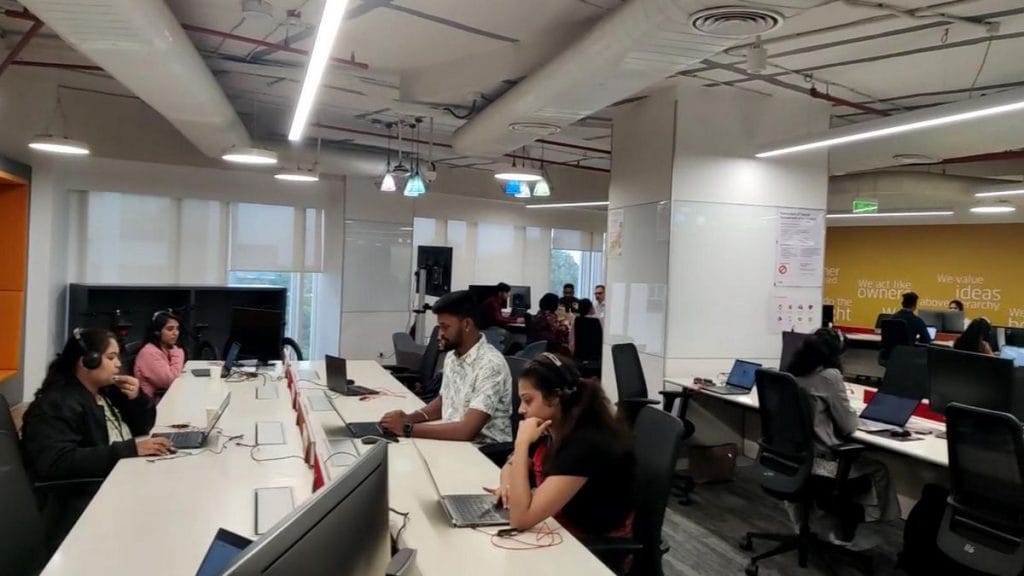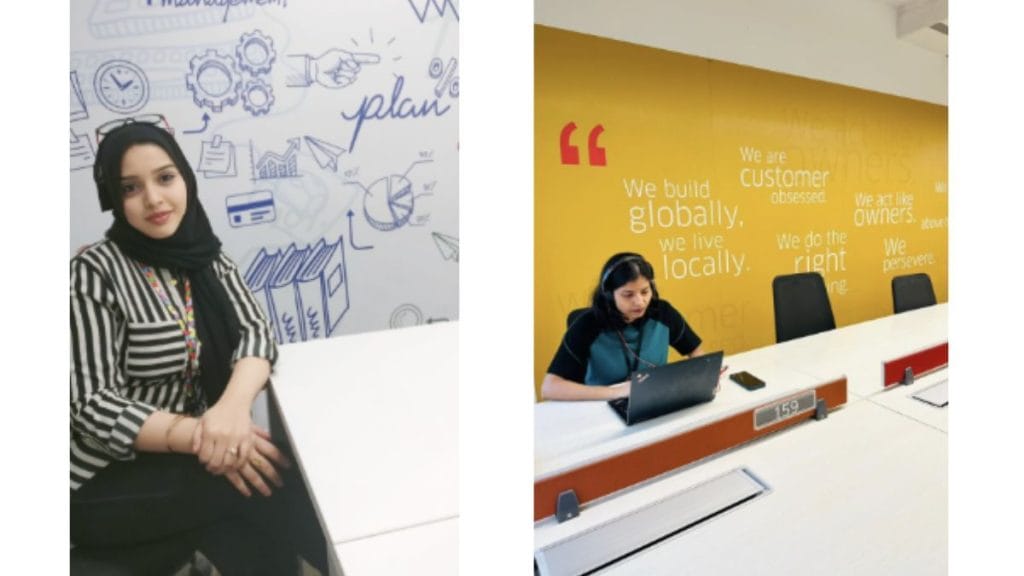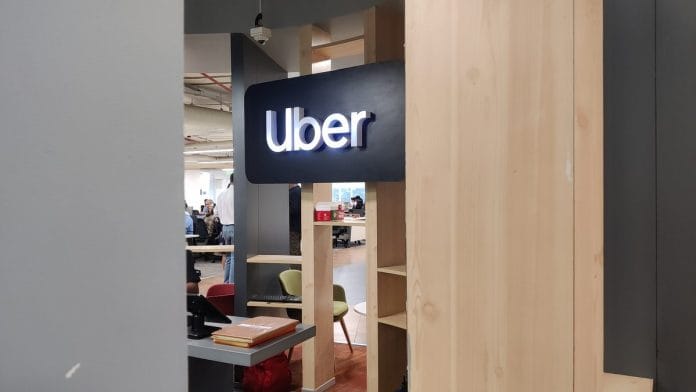Visakhapatnam: When their cab broke down in the middle of a forest area near Pune, two passengers and their Uber driver did not have to fret for long. Within minutes, another cab came to their aid, dispatched swiftly via a call from hundreds of miles away in Andhra Pradesh. Orchestrating this rescue operation was 25-year-old Sweta, a safety agent with Uber.
For Sweta and hundreds of other safety agents at Uber’s Centres of Excellence (CoEs) in Visakhapatnam and Hyderabad, responding to urgent calls for assistance from all corners of the country is just another day at the office. Their mandate is to serve as mediators between riders and drivers to ensure safe and hassle-free journeys.
But the men and women at the CoEs are not just helplines — they bring a human touch to resolving conflicts, fact-find to ensure that no one is being taken for a metaphorical ride, and think on their feet to come up with solutions.
“Our job is not just to pacify the agitated party, be it customer or rider. We also need to corroborate the facts and then take appropriate action,” said Mohammad Shanawaz, a safety agent at the Visakhapatnam CoE.
ThePrint spent a day at this CoE in the last week of July, shadowing the safety agents during their live and outbound calls. The swanky 600-seater office in the heart of Visakhapatnam had safety agents seated across the floor, armed with their headsets and laptops, on the constant beck and call of the riders and drivers.
The agents are equipped to handle conversations in about 10 languages, including Hindi, English, Bengali, Tamil, Telugu, and Malayalam. According to Lorraine Collison, head of the Visakhapatnam CoE, over 51 per cent of the employees at this centre are women.

According to Manasi Chadha, head of customer support, India and South Asia, more than 60 per cent of all inbound calls to the helplines comprise complaints about ‘offline’ trips (where the driver insists on turning off the app and only accepting cash), driving-related issues, and verbal disagreements.
While Uber declined to share data on how many calls are received on a daily or monthly basis, Chadha said that the number of calls is roughly proportional to the volume of rides in a particular city.
Among the 123 Indian cities that Uber operates in, Delhi, Mumbai, Bengaluru, Chennai, and Kolkata account for more than 50 per cent of all inbound calls on the Uber Safety Line, according to data shared by the ride-sharing platform.
For a metropolitan city, the peak office hours in the morning and evening account for most calls, the data shows.
The 24X7 safety helpline remains active during and 30 minutes after the trip ends. It was launched in 2019 in select cities and is now available to users across the country.
According to Chadha, 99 per cent of the safety line calls are responded to in “less than 30 seconds”.
Also Read: Blinkit deliverymen would rather work for Uber-Ola, run YouTube channels. Dignity comes first
Faces behind the ‘panic’ button
At the sprawling Visakhapatnam CoE, most of the employees sit at long white tables facing each other. There are also over a dozen small cabins named after football clubs, such as Bayern Munich and Arsenal, for meetings and other purposes.
At one end of the office, there are “quiet rooms” where agents can unwind after an overwhelming call. In one corner, there are bicycles that employees can use to take a break.
The work itself can be challenging and unpredictable. For example, 25-year-old Shanawaz, an engineering graduate from Vizag who found his calling in customer service, heard out an agitated driver on the other end.
Barely taking a pause, the driver complained about a passenger who had not only entered an incorrect location, but had also verbally abused and physically assaulted him. As the driver narrated his ordeal, Shanawaz constantly assured him of appropriate action and compensated the fare.
On the other end of the room sat Sweta, on a call with a rider who alleged that her phone was stolen by the driver who also cancelled the ride. Even as she assured the caller of appropriate action, Sweta rapidly cross-checked the location and timing of the purported incident. It was found that the two had not even met.
With every call, in fact, she juggled multiple tabs, filling spreadsheets and taking notes.
“Our job is not just to take calls. We are constantly researching and updating our database. In each case, we go through the history of drivers and passengers to understand more about them. We also keep a close eye on any developing trend,” said Sweta, who is originally from Jamshedpur and has been with Uber for eight months.
Collison concurred that safety agents don’t just firefight, but also draw insights and data from the numerous calls they take during the day.
“They are the best ones to tell us about any insights. They are the ones interacting with the riders and passengers,” said Collison. “When cancellations were on the rise because the driver did not know about the drop location before accepting the ride, they were the ones to catch that.”
While Sweta and Shanawaz are part of the team which deals specifically with live incoming queries, another team probes issues more deeply.
Umme Aymen, a native of Hyderabad and a five-year Uber employee is a member of this team. She was in the Vizag office at the time of ThePrint’s visit, calling a driver who had lodged a complaint about a dispute with a passenger over the drop location.

The driver recounted how the passenger had made him drive several kilometres beyond the designated drop point and refused to pay the fare difference between the initial estimate and the revised amount.
Aymen listened intently and committed to compensating the driver for the money he lost. The driver, who was angry at the start of the conversation, expressed his thanks for just being taken seriously.
“Sometimes, all they want is to be heard. It helps them to know there is another human on the other end to resolve their issues,” said Aymen, an MBA graduate, who described herself as “customer-obsessed”.
Shweta, too, said she finds joy in handling new cases every day and helping people.
RideCheck, Rs 5 lakh insurance, SoS button
In addition to the agents working on the 24/7 helpline, Uber has integrated a range of safety features into its application. For example, if a possible anomaly is detected during a trip, such as an unexpectedly long stop, Uber’s RideCheck feature sends an in-app notification to both the driver and passenger, prompting them to verify that all is well.
Additionally, every passenger and driver travelling in an Uber cab is insured at no extra cost. The coverage offered includes Rs 5 lakh in the event of death, up to Rs 5 lakh for permanent disability, and up to Rs 2 lakh in the event of hospitalisation, with a sub-limit of up to Rs 50,000 for outpatient treatment.
Another feature that is expected to be rolled out across cities is the SoS feature to register an emergency. When a passenger clicks on this, the nearest police station receives the GPS location of the vehicle.
This feature has been live in Hyderabad since July 2022. According to an Uber case study shared with ThePrint, a passenger in the city recently pressed the SoS button after an argument broke out with a driver. As soon as this was done, his live location
along with trip details was sent out to the nearest police station. The police called up to check on the passenger’s well-being and managed to de-escalate the situation over the phone.
According to an Uber spokesperson, had the de-escalation not been successful, a team of police officers would have been dispatched to help the passenger.
“The conversations with police departments across states are underway,” said Sooraj Nair, head of Uber’s safety operations in India and South Asia.
The reporter visited the Visakhapatnam COE on the invitation of Uber.
(Edited by Asavari Singh)
Also Read: ‘Hi, I’m calling from…’ – Why tele-calling is a hit among India’s youth desperate for a job






